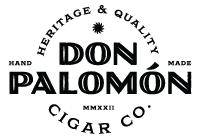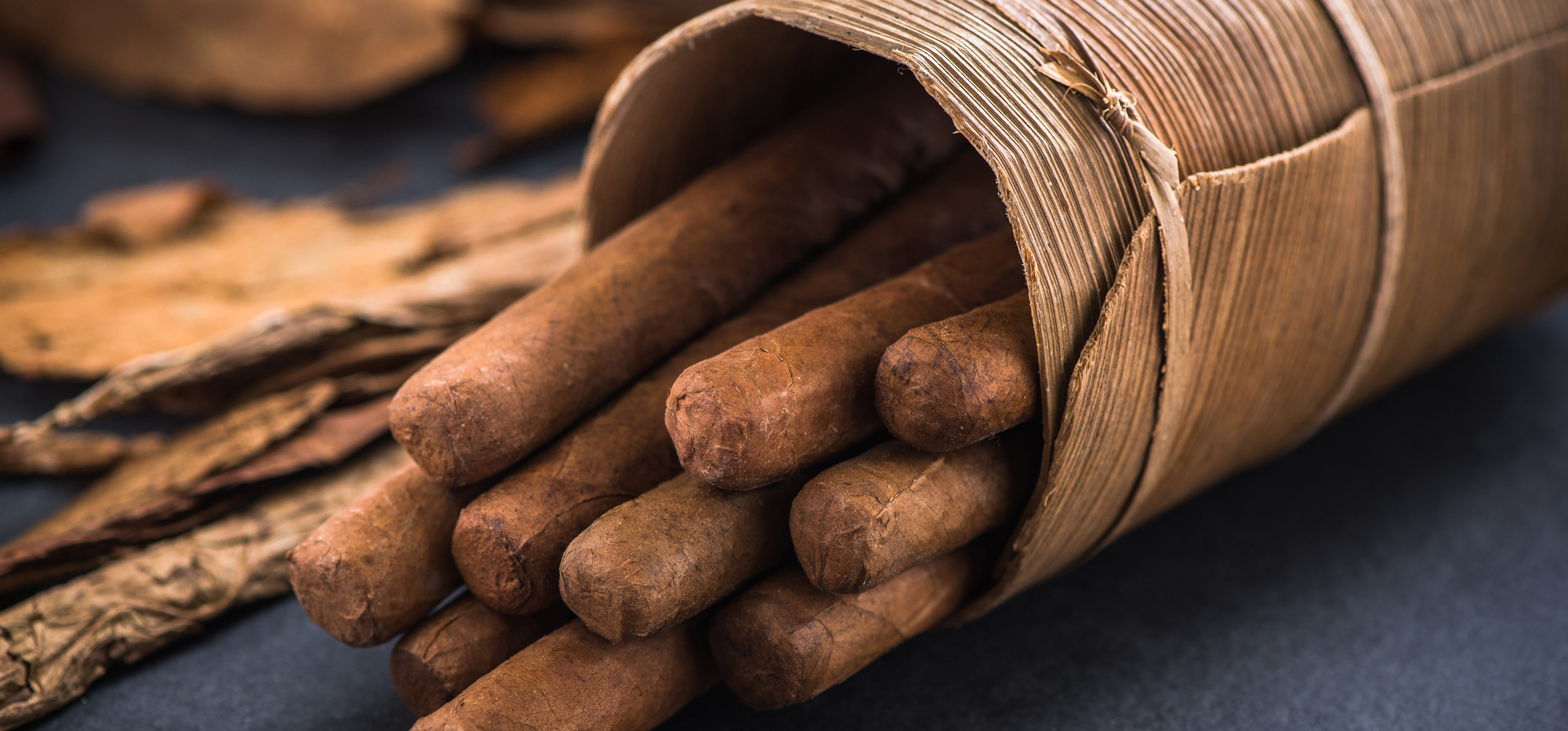— Maduro Nicaragua Wrapper
Maduro Nicaragua wrapper tobacco is a type of tobacco that is used in the production of premium cigars. It is known for its dark and oily appearance, as well as its rich and complex flavor.
Maduro Nicaragua wrapper tobacco is typically grown in the Jalapa region of eastern Nicaragua. The warm and sunny days and cool nights in Jalapa provide the perfect conditions for the slow maturation of the tobacco leaves, which results in their dark color and rich flavor. The leaves are carefully tended to, and the plants are harvested by hand when they reach the peak of their maturity.
The flavor of Maduro Nicaragua wrapper tobacco is rich and complex, with notes of chocolate, coffee, and spice. It is often used in premium cigars as the outermost layer, known as the wrapper. The wrapper is the part of the cigar that is visible and is typically the most flavorful part of the cigar.
The use of Maduro Nicaragua wrapper tobacco in premium cigars has become increasingly popular in recent years, as cigar aficionados have come to appreciate the rich and complex flavor it imparts. The tobacco is carefully aged and fermented to develop its full flavor, and it is typically used in the production of medium to full-bodied cigars.
Despite facing challenges in recent years, including the effects of climate change and competition from other tobacco-producing countries, Nicaragua remains one of the world’s top tobacco-growing nations. The use of Maduro Nicaragua wrapper tobacco in premium cigars is a testament to the country’s dedication to producing high-quality tobacco.
— Indonesian Cigar Binder
Indonesia is known for its rich tobacco culture, and one of the most prized products is the premium Indonesian cigar binder. This type of binder is made from the finest tobacco leaves, which are carefully selected and expertly crafted into a strong and flavorful binder.
One of the unique features of the premium Indonesian cigar binder is its distinct color and texture. The tobacco leaves are typically grown in the fertile soils of the island of Sumatra, which is known for producing some of the finest tobacco in the world. The leaves are carefully fermented and aged to perfection, resulting in a binder with a deep, rich color and a sturdy, fibrous texture.
In addition to its beautiful appearance, the premium Indonesian cigar binder is also prized for its flavor. The tobacco used in these binders has a rich, bold flavor that is perfectly balanced with notes of sweetness and spice. This makes it the perfect choice for cigar enthusiasts who want to experience the full range of flavors that a cigar has to offer.
One of the key factors that sets the premium Indonesian cigar binder apart from other binders is the care and attention to detail that goes into its production. The tobacco leaves are carefully selected and expertly crafted by skilled artisans who have honed their craft over many years. This attention to detail ensures that each and every binder is of the highest quality, and provides a truly exceptional smoking experience.
Overall, the premium Indonesian cigar binder is a must-try for any cigar enthusiast. Its unique color, texture, and flavor make it a standout choice, and its expert craftsmanship ensures that it will provide a truly exceptional smoking experience. So if you want to experience the best that the Indonesian tobacco industry has to offer, be sure to try a premium Indonesian cigar binder today.
– Habano Criollo Nicaragua Wrapper
Habano-Criollo cigar wrapper from Nicaragua is a type of tobacco that is used in the production of some of the world’s finest cigars. The term “Habano” refers to the type of cigar that is made with this tobacco, while “Criollo” refers to the specific variety of tobacco plant that is used. Nicaragua is known for its rich, fertile soils and ideal growing conditions, which make it a prime location for the cultivation of Habano-Criollo tobacco.
One of the unique characteristics of Habano-Criollo cigar wrapper from Nicaragua is its rich and robust flavor. The tobacco leaves are carefully tended and harvested at the peak of their maturity, resulting in a bold and flavorful wrapper. This bold flavor is balanced with notes of sweetness and spice, making it the perfect choice for cigar enthusiasts who want to experience the full range of flavors that a cigar has to offer.
In addition to its flavor, Habano-Criollo cigar wrapper from Nicaragua is also prized for its unique color and texture. The leaves have a deep, rich color that is characteristic of Habano cigars, and a smooth, silky texture that adds to the overall enjoyment of the cigar. This beautiful wrapper is the result of careful cultivation and expert craftsmanship, ensuring that every premium cigar made with this wrapper is of the highest quality.
When it comes to the production of cigars, the wrapper plays a crucial role in the final flavor and aroma of the cigar. The tobacco is carefully fermented and aged to bring out its full flavor and aroma, and is then expertly crafted into a wrapper that adds to the overall enjoyment of the cigar. This process can take several years, but the end result is a cigar with a rich and complex flavor and a smooth and satisfying smoke.
Overall, the Habano Criollo – Nicaragua cigar wrapper is a key component in the production of some of the world’s finest cigars. Its bold flavor and unique color and texture make it a favorite among aficionados, and its careful cultivation and production ensure that every Premium cigar is of the highest quality. If you are a cigar lover, be sure to try a Habano Criollo wrapper from Nicaragua and experience the full range of flavors and aromas that this exceptional tobacco has to offer.
The Cuban Sandwich cigar making method
The Cuban Sandwich cigar making method is a traditional technique that is used to produce some of the world’s finest cigars. It involves carefully selecting and blending different varieties of tobacco, and then rolling the blend into a cigar using a specific folding technique.
The first step in the Cuban Sandwich cigar making method is to select the right tobacco leaves. This typically includes a blend of different varieties of tobacco, such as Habano-Criollo wrapper, Nicaraguan binder, and filler premium tobacco . The leaves are carefully sorted and selected based on their color, texture, and flavor, to ensure that the final blend is of the highest quality.
Once the tobacco leaves have been selected, they are carefully blended to create a harmonious balance of flavors. This is a crucial step in the cigar making process, as the right blend of tobacco can greatly affect the final flavor and aroma of the cigar.
Once the blend has been created, the tobacco is rolled into a cigar using a specific folding technique known as the “Cuban Sandwich” method. This involves layering the different varieties of tobacco on top of each other, and then rolling them into a cigar shape. This technique creates a compact and tightly rolled cigar, which helps to preserve the flavors and aromas of the tobacco.
Overall, the Cuban Sandwich cigar making method is a traditional and time-honored technique that is used to produce some of the world’s finest cigars. Its careful selection and blending of different varieties of tobacco, and its unique folding technique, result in a cigar with a rich and complex flavor and a smooth and satisfying smoke.
Medium Filler for Bigger Girths
Bigger girth cigars tend to use medium filler tobacco because it provides a more balanced and consistent smoke. Medium filler is a type of tobacco that is cut into shorter, wider strips, which allows it to be packed into a cigar more tightly and evenly. This creates a more balanced and consistent burn, and helps to prevent the cigar from becoming too hot or harsh.
In contrast, smaller girth cigars often use long filler tobacco, which is made up of whole tobacco leaves that are rolled into a cigar. This provides a more complex and nuanced smoke, but can also result in a less consistent burn. Long filler tobacco is better suited for smaller cigars, as it allows for more air flow and a cooler smoke.
Overall, the type of filler tobacco used in a cigar is determined by its size and shape. Bigger girth cigars tend to use medium filler tobacco for its balanced and consistent smoke, while smaller girth cigars often use long filler tobacco for its complex and nuanced flavors.


